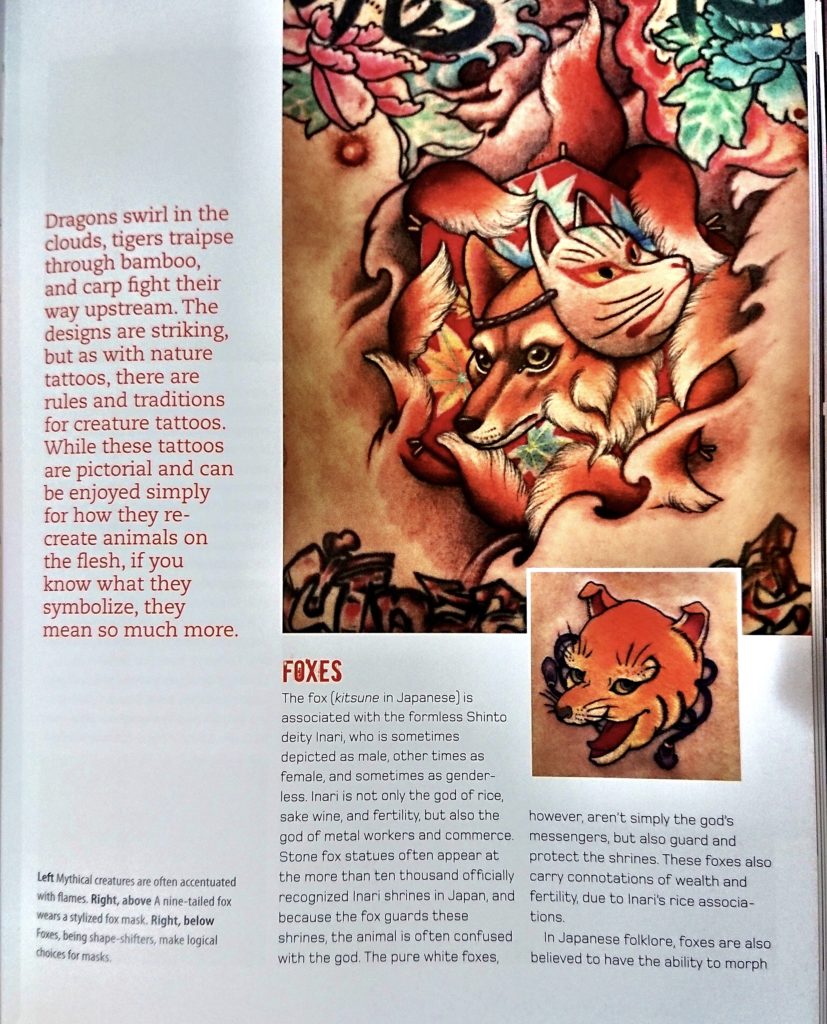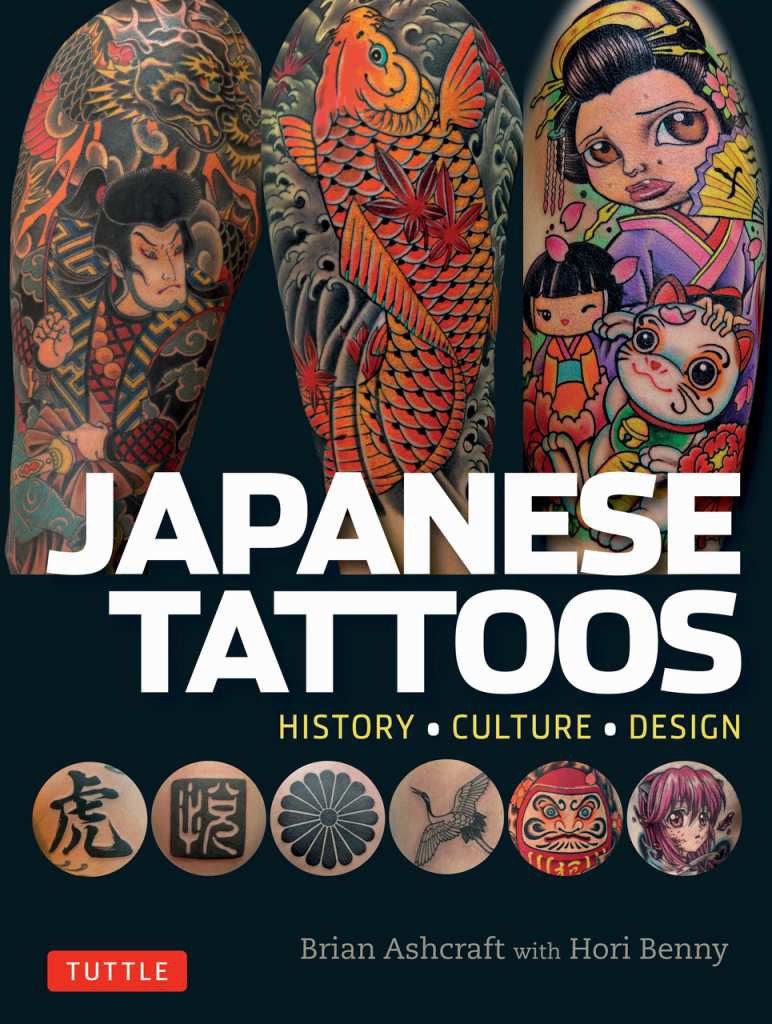By Taylor Drew
Coauthored by Brian Ashcraft, a senior contributing editor for the website Kotaku, and Osaka based tattoo artist Hori Benny, this book Japanese Tattoos: History * Culture * Design was written with the goal with the intention of helping those that are thinking of getting a Japanese style tattoo (perhaps most commonly known outside of Japanese as irezumi・刺青). Both authors use extensive knowledge of Japanese style tattooing and personal interviews to guide the novice away from committing any cultural faux pas in a work that spans 158 glossy pages.
“Over the course of researching, interviewing, and writing this book, we consulted numerous friends, colleagues, experts, and total strangers with the goal of introducing and decoding the most prevalent motifs so that English speakers can have a better understanding of their meaning and hopefully get Japanese tattoos that can be worn with pride – as they should be”
The book begins with an introduction to the history of irezumi in Japan, from punitive tattoos, to prohibition, and all the way back to modern times. This first section also covers briefly some reasons why Japanese tattoos have changed over time. The book is then divided into six additional chapters based on the different styles and motifs found in irezumi, with numerous sections in each chapter that clearly divide different motifs in that style. A tattooist and client profile are also included at the end of every chapter, giving life to the theme of that particular chapter. There are also information boxes that provide additional information to support the content within the main body of the work. All of this is supported with high quality, full colour images of tattoos and virtually every single page of the book.
What I found extremely impressive about this book was the sheer quantity and quality of the accompanying images. Not only are specific motifs and their meanings clearly explained, but the authors have also provided imagery and explanations of the images themselves. The reader is able to enjoy each and every motif – usually in more than one style. Both Ashcraft and Hori Benny did an exceptional job collecting the various photographs of irezumi for the book.
Perhaps my favourite aspect of the book though, was the addition of the Tattooist Profile and Tattoo Client Profile at the end of every single chapter. While the majority of the book reads, to an extent, like an irezumi dictionary of sorts, these sections brought extra life into the vast amount of information being provided. We, as readers, are given the opportunity to hear the voices of individuals that are not the authors. These sections are personal and provide a real solid look into the minds of the tattoo artists and their clients. We are able to see their views on irezumi and what they mean to them personally. The extra insight brought in by these sections is a crucial component in what makes Japanese Tattoos work – it makes the “foreign” content relatable.
That being said, the large amount of information that the book contains is also a weakness. There were certain sections that I found difficult to read. There are extra text bubbles of information throughout the book, but in some places their existence takes away from the overall flow of the work. The reader is obligated to both stop midsentence to go read the “extras” or move on and hope they don’t forget to go back and read them again. Such as,
“The fox (kitsune in Japanese) is associated with the formless Shinto deity Inari, who is sometimes depicted as male, other times as female and sometimes as gender-less. Inari is not only the god of rice, sake wine, and fertility, but also the god of metal workers and commerce. Stone fox statues often appear at the more than ten thousand officially recognized Inari shrines in Japan, and because the fox guards these shrines, the animal is often confused with the god. The pure white foxes, however, aren’t simply the god’s messengers, but also guard and protect the shrines. These foxes also carry connotations of wealth and fertility, due to Inari’s rice associations.” (pg. 57)

I found sections like this rather disjointing and it did affect my reading experience. Definitely not a problem for many readers, but something that I wish would have been laid out a little better, especially considering the high quality of the content on every single page.
Overall, Japanese Tattoos was a fascinating read and I would recommend it enthusiastically to anyone interested in tattoos or keen to learn more about specifically about irezumi. While perhaps the academic might find the content a bit shallow in terms of the historical content, it is important to remember that that is NOT the goal that Brian Ashcraft and Hori Benny set for this book. They wanted to create a resource for English speakers who wanted to get Japanese tattoos. A goal that I would say they accomplished with flourishing colours.
Taylor Drew is a new contributor to JSRC she is a Canadian living in Tokyo since 2015. (Almost) fluent in Japanese. Loves Iwate and cats.

Taylor is a wonderful writing. This article was informative and clear to read. I look forward to reading more of her work.
Your support is much appreciated!